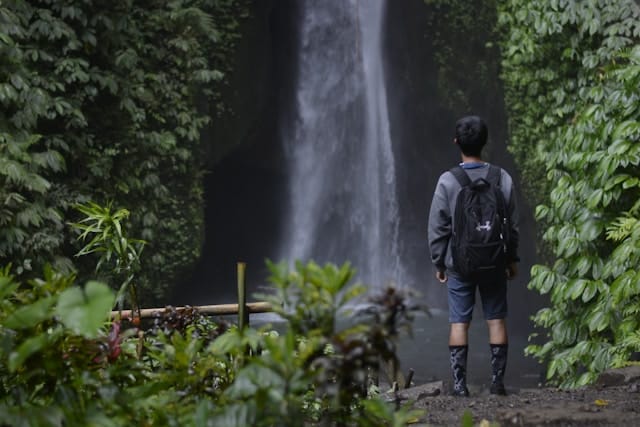In the heart of bustling urban environments, the concept of creating a space that encourages and supports wildlife may appear challenging, if not impossible. However, regardless of the size of your outdoor area, you can indeed incorporate aspects of nature into your city life. We’ll delve into the details and provide practical tips on how to transform your small garden into a sanctuary for local wildlife. You’ll find that with a bit of effort and creativity, even the smallest patch of green can become a haven for various species, providing them with the essentials: food, water, and shelter.
1. Providing Food Sources
Whether you’re an experienced gardening enthusiast or a beginner, knowing how to provide food for local wildlife can be a great first step. Your garden can serve as a vital feeding station, especially during the leaner months when food can be scarce.
A découvrir également : How Are Gamified Fitness Apps Changing the Way We Exercise in the UK?
Various plants, flowers, and even garden installations can be used to attract different species. From buzzing bees to chirping birds, your garden’s flora will play a major role. Incorporating native plants and flowers can be an excellent start. These are both familiar and attractive to local wildlife, and they often produce nectar, seeds, or berries that can nourish various creatures.
Consider installing bird feeders that cater to different types of birds. While small birds prefer seeds, larger species, such as blackbirds and thrushes, are fond of fruit. Don’t forget about ground-feeding birds. Areas left undisturbed can be perfect for creatures like hedgehogs or insects.
A lire en complément : What Are the Safety Considerations for Biometric Data in Smartphones?
2. Creating Water Features
Water is a critical element for wildlife. By creating a water feature, you will not only provide a drinking source but also potentially create a living space for various aquatic species.
There are numerous ways to incorporate water into your garden. Small ponds can be home to frogs, newts, and a variety of insects. If you have limited space, consider smaller features such as bird baths or even simple dishes of water. Remember to keep the water clean and fresh, as stagnant water can attract unwanted pests.
Place your water features in quiet, shaded areas and try to include varying depths. Shallow edges will allow birds and small animals to drink without fear of falling in, whereas deeper areas can be perfect for aquatic life.
3. Providing Shelter and Breeding Grounds
A wildlife-friendly garden will provide shelter, a safe refuge from predators, and a breeding ground. Dead wood piles, leaves, and compost heaps can create cozy habitats for insects, while dense shrubs and hedges will provide great cover for birds.
Nest boxes can encourage bird species to set up home in your garden. Position these high up and away from busy areas for the best success rate. Also, consider incorporating a bug hotel, a fun and beneficial addition that offers refuge for a host of invertebrates like ladybirds and bees.
4. Planting for Pollinators
Flowering plants play a crucial role in supporting the UK’s pollinators – bees, butterflies, and other insects. By selecting the right plants, your garden can become a paradise for these essential creatures.
When it comes to choosing your plants, variety is key. Aim to choose plants that flower at different times of the year to provide a continuous food source. Native plants like lavender, foxgloves, and honeysuckle are excellent choices. Not only do they produce nectar and pollen, but they also add stunning aesthetic appeal to your outdoor space.
5. Reducing Chemical Use
If your goal is to create a haven for wildlife, it’s essential to reduce or even eliminate the use of chemical pesticides and fertilizers in your garden. These chemicals can have devastating effects on wildlife, especially on beneficial insects.
Instead, consider adopting organic gardening methods. Composting is a great way to recycle kitchen and garden waste into rich, nutritious soil. Encouraging natural predators can also help keep pest populations in check. For example, a hedgehog can be a useful ally in dealing with slugs and snails.
Creating a wildlife-friendly garden in an urban setting is not only possible, but it’s also a rewarding activity. By providing essential resources and habitats, you can help support local wildlife, contributing to biodiversity and environmental conservation in your corner of the world.
6. Cultivating a Safe Environment for Small Mammals
Small mammals like hedgehogs, shrews, and voles can be great assets to your garden, helping to control pests naturally. However, these species often struggle to find safe havens in urban environments. You can assist by creating an environment that invites and protects them.
Start by leaving some areas of your garden a little wild. Longer grass, piles of leaves, or a compost heap can provide much-needed shelter and food sources for these creatures. Keep in mind that these mammals can be quite shy, so place these refuges in quiet corners of your garden.
You might also consider building a hedgehog house or similar shelter. These can be purchased or easily made using untreated wood. Place the shelter in a quiet, covered area and fill it with leaves or straw for bedding. Just remember, safety first – ensure these are away from potential dangers like fire pits or busy walkways.
Also, be mindful when gardening. Small mammals can easily hide in long grass or compost heaps, so always check before strimming or turning compost. By giving consideration to these creatures, your garden can become a valuable refuge for local wildlife.
7. Choosing Wildlife-Friendly Plants
The right selection of plants can transform your garden into a paradise for local wildlife. The key is to choose a mix of plants that produce pollen, nectar, berries, or seeds throughout the year. This will provide a consistent food source and attract a variety of visitors.
Opt for native plants where possible. These are already adapted to your local climate and soil conditions, and British wildlife will be familiar with them. Consider plants like hawthorn, holly, and honeysuckle, which offer multiple benefits. They provide nectar for bees, butterflies, and other pollinators; berries for birds; and dense foliage for shelter.
In addition, include a range of flowering plants to attract pollinators. Lavender, foxglove, and poppies are all excellent choices. Not only do they attract pollinators with their bright colors and sweet nectar, but they also add aesthetic appeal to your garden.
Remember, diversity is key. More variety means a wider range of habitats and food sources, which in turn will attract a broader range of wildlife.
Conclusion – Embrace the Wildlife Gardening Guides
In conclusion, creating a wildlife-friendly garden in an urban UK setting is not only achievable but also incredibly rewarding. By considering the needs of local wildlife, from food and water sources to shelter and breeding grounds, you can create a vibrant, living room for nature right on your doorstep.
Incorporating native plants, fostering safe habitats for small mammals, reducing chemical use, and choosing pollinator-friendly plants are all steps that will help make your garden a haven for British wildlife. Whether you’re starting with a bare patch or revamping an existing garden, these wildlife gardening tips can guide you on your journey.
Remember, every little help counts when it comes to supporting biodiversity. Each wildlife-friendly garden contributes to a network of green spaces that provide essential resources for our urban wildlife. So, get out there and start gardening for wildlife!













